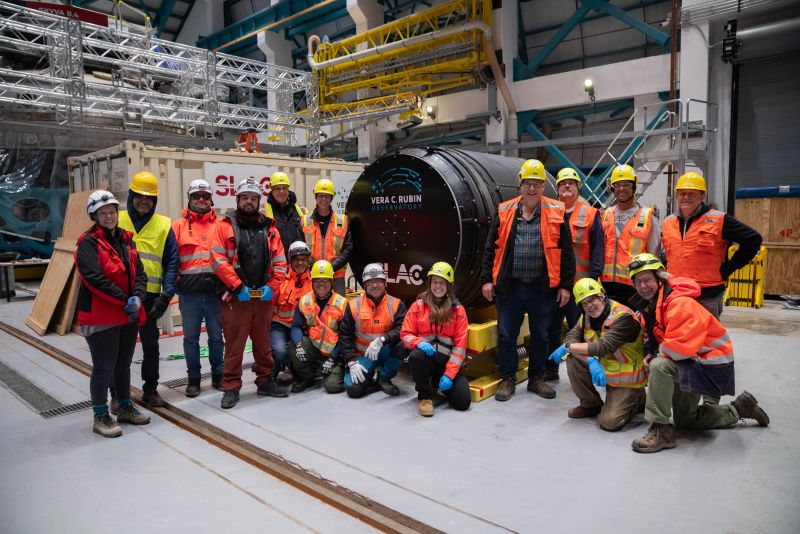The 3200-megapixel Legacy Survey of Space and Time (LSST) Camera, the groundbreaking instrument at the core of the NSF-DOE Vera C. Rubin Observatory, has arrived at the observatory site on Cerro Pachón in Chile. The U.S. National Science Foundation and the U.S. Department of Energy's Office of Science jointly fund the observatory. The camera will capture enormous, detailed images of the southern hemisphere sky for 10 years as part of Rubin Observatory's mission to solve longstanding scientific mysteries by building the most comprehensive timelapse view of the universe ever seen.
"The arrival of the cutting-edge LSST Camera in Chile brings us a huge step closer to science that will address today's most pivotal questions in astrophysics," said Kathy Turner, DOE's program manager for Rubin Observatory.

The LSST Camera, the largest digital camera in the world, was built at DOE's SLAC National Accelerator Laboratory in Menlo Park, California. After two decades of work, its completion was announced in April. This sensitive camera will soon be installed at Rubin Observatory, producing detailed images with a field of view seven times wider than the full moon.
Using the LSST Camera, Rubin Observatory will fuel advances and discoveries in many areas of science, including exploring the nature of dark matter and dark energy, mapping the Milky Way and surveying the solar system.
Secure in its custom-built container, the car-sized LSST Camera was transported on a 747 cargo plane and multiple trucks, ultimately arriving at the summit of Cerro Pachón, where the Rubin Observatory team inspected it. The LSST Camera is the final major component of the Rubin Observatory's Simonyi Survey Telescope to arrive at the summit. After several months of testing, it will be installed along with Rubin's newly coated 8.4-meter primary mirror and 3.4-meter secondary mirror.






